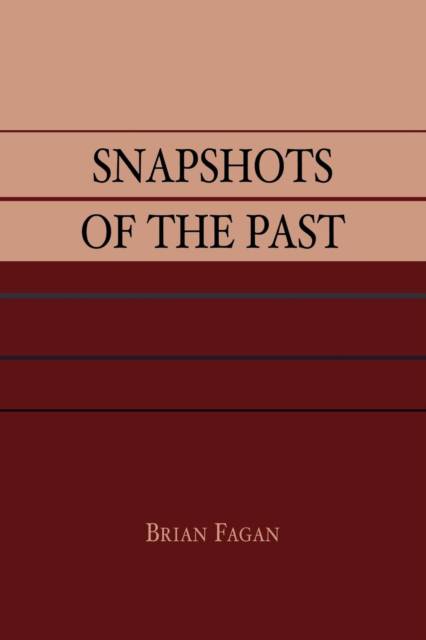
- Afhalen na 1 uur in een winkel met voorraad
- Gratis thuislevering in België vanaf € 30
- Ruim aanbod met 7 miljoen producten
- Afhalen na 1 uur in een winkel met voorraad
- Gratis thuislevering in België vanaf € 30
- Ruim aanbod met 7 miljoen producten
Zoeken
Omschrijving
Archaeology has been a subject of endless fascination to scholars, students and the general public. For the past three decades, Prof. Brian Fagan has been the key narrator of the story of the past for many, through his textbooks, trade books and numerous magazine and journal articles. In recent years, Fagan has reported on the latest news, theories, and controversies in archaeology through his regular Timelines column in Archaeology Magazine. In Snapshots of the Past, Fagan collects many of these vignettes into a single work, leading the reader on a tour through time and space that ranges from the ascent of the human species to the public controversies that concern today's archaeologist. In these 30 brief chapters, the author offers readers a series of "snapshots" of the issues of greatest contemporary interest: the Eve hypothesis, the peopling of the New World, site looting, the translation of Mayan hieroglyphs, the domestication of animals, the impact of feminism on archaeology, the archaeology of slavery, and evidence of human cannibalism, among many others. Included among the articles are several pieces written specifically for this volume, including a description of the recent, spectacular cave art finds at Chauvet Grotto in France. For instructors of archaeology, the book is a handy compilation of brief, interesting cases to engage your students. For serious archaeologists, the book represents a collection of works of one of the important synthesizers of the field. For the avocational archaeologist, the book provides a fascinating, readable update on issues of current concern.
Specificaties
Betrokkenen
- Auteur(s):
- Uitgeverij:
Inhoud
- Aantal bladzijden:
- 168
- Taal:
- Engels
Eigenschappen
- Productcode (EAN):
- 9780761991090
- Verschijningsdatum:
- 25/09/1995
- Uitvoering:
- Paperback
- Formaat:
- Trade paperback (VS)
- Afmetingen:
- 151 mm x 227 mm
- Gewicht:
- 276 g

Alleen bij Standaard Boekhandel
+ 169 punten op je klantenkaart van Standaard Boekhandel
Beoordelingen
We publiceren alleen reviews die voldoen aan de voorwaarden voor reviews. Bekijk onze voorwaarden voor reviews.











